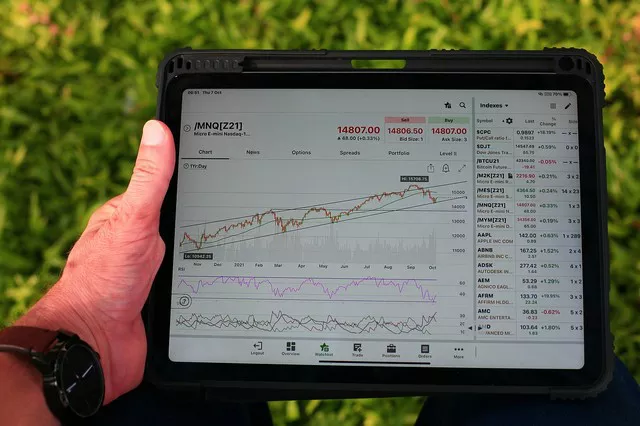Futures markets are an integral part of the global financial system, providing a platform for hedging, speculating, and price discovery in various commodities and financial instruments. However, one commodity conspicuously absent from the futures market is cement.
The Nature of Cement
Cement is a unique commodity with distinct characteristics that contribute to the absence of a futures market. Cement is primarily a regional product due to its high transportation costs and the perishable nature of its main ingredient, clinker. Unlike commodities such as oil or gold, which have global demand and supply dynamics, cement’s market dynamics are primarily driven by local construction and infrastructure projects. This regional nature makes it challenging to establish a global futures market.
Price Volatility and Hedging Needs
The volatility of cement prices is another critical factor that has discouraged the development of a futures market. Cement prices are influenced by a multitude of factors, including raw material costs, energy prices, regulatory changes, and regional economic conditions. As a result, cement prices can be highly unpredictable, making it challenging for market participants to use futures contracts for effective hedging. Hedgers prefer stable and predictable price movements to effectively manage risk, which is difficult to achieve in the cement market.
Supply Chain Complexity
The cement industry’s complex supply chain also contributes to the absence of a futures market. The production of cement involves a series of steps, from mining raw materials to processing and transportation. Unlike commodities with straightforward supply chains, cement production is influenced by a wide array of factors, such as mining permits, transportation infrastructure, and environmental regulations. This complexity makes it challenging to create standardized futures contracts that can accurately represent the industry.
Local Market Dynamics
Cement is predominantly a local commodity, with supply and demand influenced by regional factors. Construction projects, urbanization rates, and infrastructure development vary significantly from one region to another. As a result, a futures market in cement would need to account for these regional differences, making it impractical to establish a single global benchmark. The absence of a standardized benchmark hampers the development of a futures market.
Regulatory Hurdles
The regulatory environment in the cement industry presents additional challenges for establishing a futures market. Various countries have specific regulations governing cement production and distribution, which may include price controls, quality standards, and environmental restrictions. Developing futures contracts that comply with these diverse regulations and meet the needs of a global market is a daunting task. Regulatory hurdles can hinder the standardization of contracts and create uncertainty for market participants.
Lack of Speculative Interest
Successful futures markets require both hedgers and speculators. While hedgers use futures contracts to manage price risk, speculators provide liquidity and enhance market efficiency. However, attracting speculators to a cement futures market is challenging due to the limited appeal of cement as a speculative investment. Unlike commodities with broad appeal, such as oil or gold, cement lacks the allure of significant price appreciation and is not considered a store of value.
Margin Requirements and Liquidity
For a futures market to thrive, it must offer sufficient liquidity and manageable margin requirements. Liquidity ensures that participants can enter and exit positions without significant price slippage, while reasonable margin requirements make participation accessible to a broader range of market participants. Cement’s unique characteristics, such as price volatility and regional variations, pose challenges for creating liquid and cost-effective futures contracts.
Market Fragmentation
The cement industry is fragmented, with numerous producers and suppliers, each operating in distinct regions. This fragmentation further complicates the development of a centralized futures market. Establishing a futures exchange for cement would require the cooperation of various industry stakeholders and regulatory bodies, a daunting task given the diversity of interests and priorities.
Forward Contracts as an Alternative
While a futures market in cement remains elusive, forward contracts have been used as an alternative for managing price risk. Forward contracts are private agreements between two parties to buy or sell a specific quantity of cement at a predetermined price at a future date. These contracts are tailored to the specific needs of the parties involved, allowing for greater flexibility than standardized futures contracts.
Potential Implications of Cement Futures
Despite the numerous challenges, the introduction of cement futures could have some potential benefits. A futures market could provide a transparent and efficient price discovery mechanism, allowing market participants to gain insights into future price trends. It may also offer a hedging tool for companies engaged in large-scale construction projects, helping them mitigate the risks associated with volatile cement prices.
Conclusion
The absence of a futures market in cement is primarily a result of the unique characteristics of the cement industry, regional nature of the commodity, price volatility, supply chain complexities, and regulatory hurdles. While a cement futures market might offer some benefits, it remains a challenging proposition due to the need for standardized contracts, market fragmentation, and the lack of speculative interest.
For now, the cement industry relies on alternative risk management tools such as forward contracts and options to navigate the complexities of the market. The development of a futures market in cement would require a concerted effort by industry stakeholders, regulatory bodies, and financial institutions to address these challenges and create a viable and effective platform for managing price risk in the cement industry.


